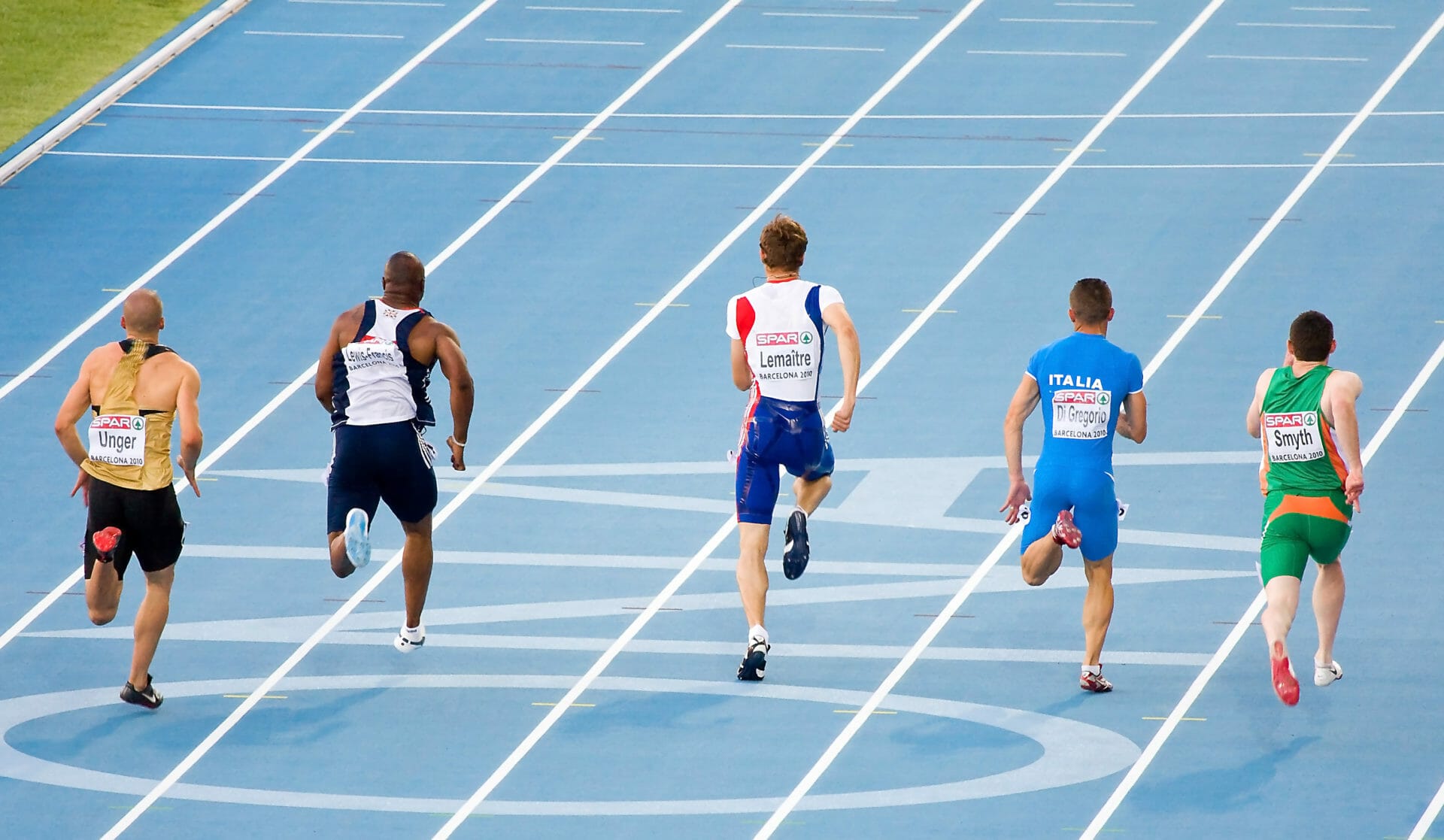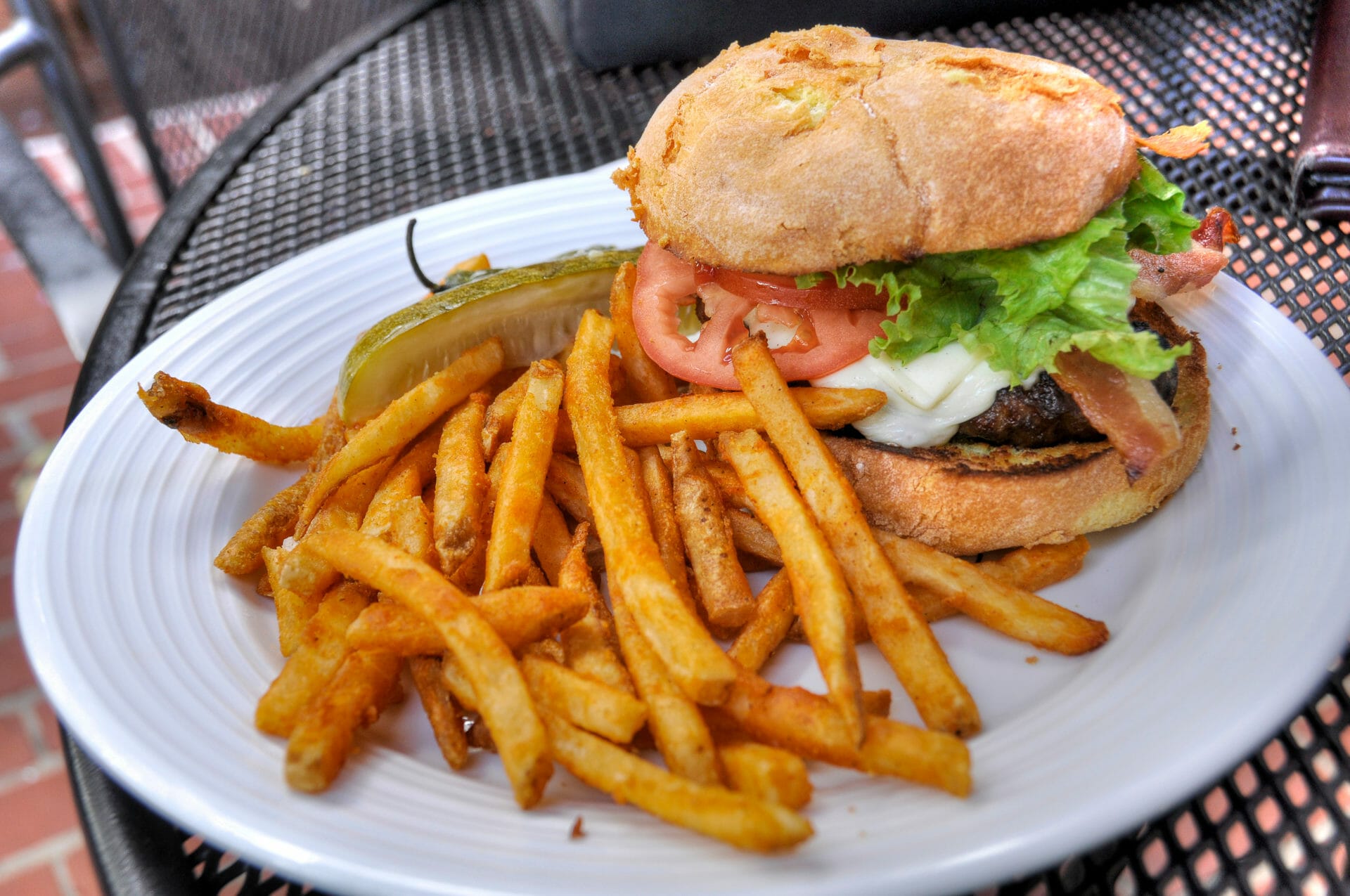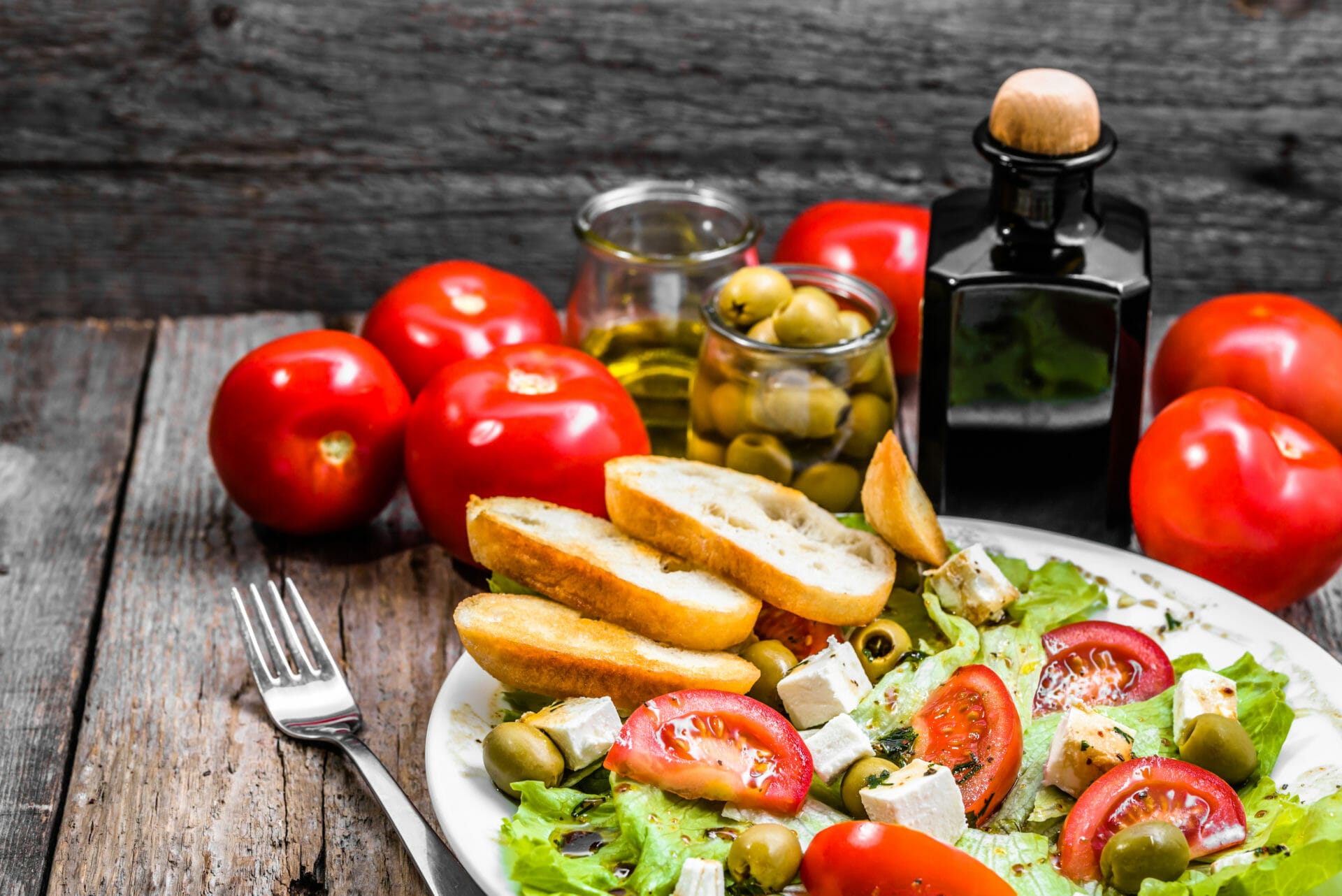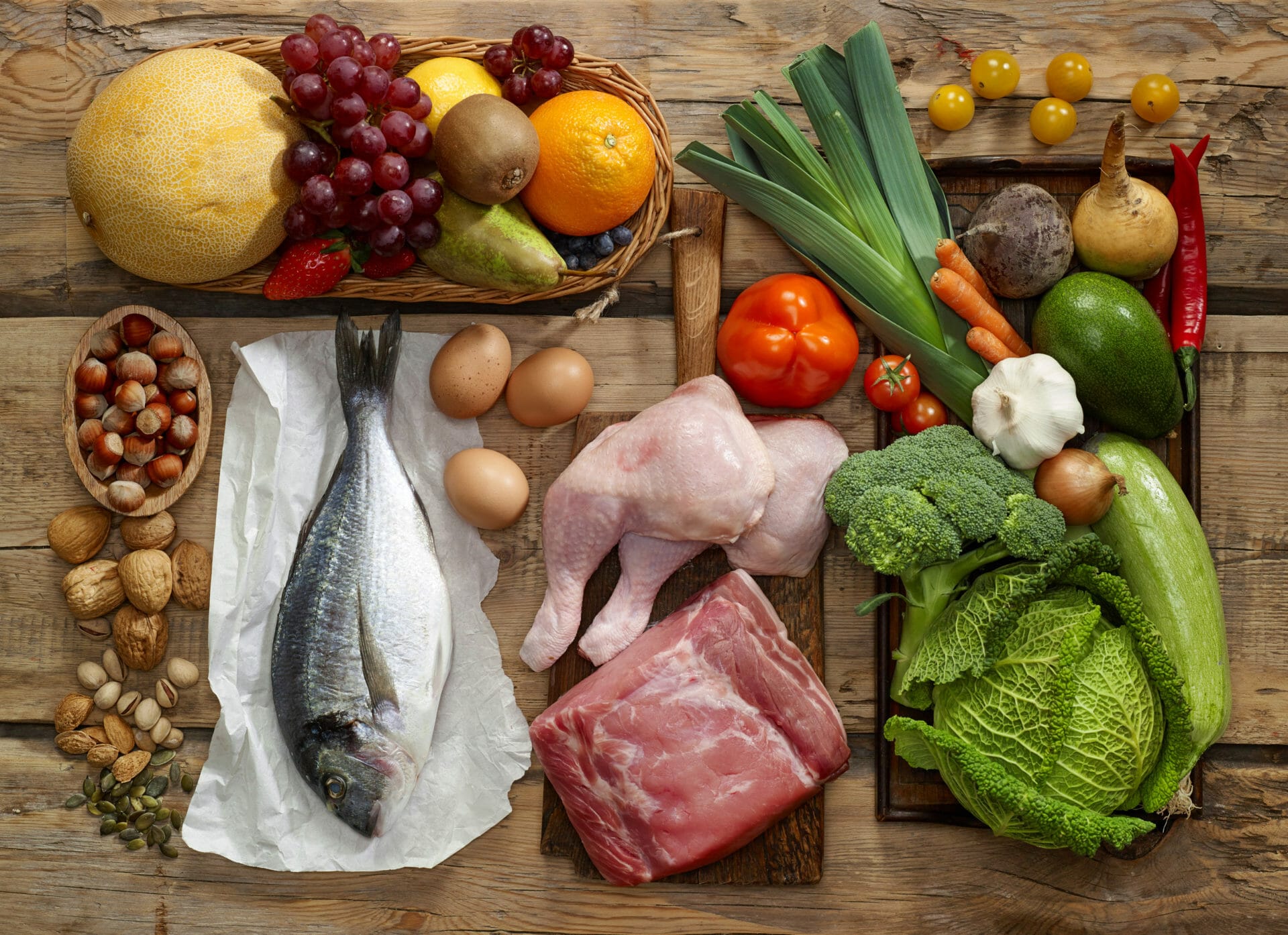Nutrition plays a significant role in physical performance and fitness.
That’s why many professional athletes work with nutritionists and dietitians to fine-tune their diet and squeeze every last bit of performance out of their bodies.
But using food to improve endurance and strength isn’t limited to pro athletes. Many casual athletes have discovered that what they eat can impact their performance as well as their waistline.
As a result, many gyms offer nutrition and meal planning as part of their portfolio of services, in order to guide fitness enthusiasts through the jungle that is healthy eating.
During my career as a pro athlete in my early 20s, food wasn’t something I was overly concerned with. I just didn’t understand its impact on performance. It wasn’t until my mid-30s (long after I’d hung up my racing shoes) that I began appreciating the influence of diet on the human body.
Since I started CrossFit two years ago, I’ve tried and heard about numerous — often conflicting — dietary lifestyles and their supposed benefits for improving physical performance.
If you’re a member of a gym or a CrossFit box, you’ve undoubtedly heard someone rave about zone, keto, paleo, vegan, vegetarian, or other types of diets.
Often, the type of sport determines the popularity of a given diet. For example, the zone and Paleolithic (or paleo) diets are particularly popular within the CrossFit community.
However, regardless of the dietary philosophy, “counting macros” appears to be the most popular approach to eating for many athletes.
In this article, I’ll take a closer look at the most popular diets and their scientific impact on exercise performance. Using that information, you can pick the dietary lifestyle that best supports your individual goals.
What Are You Trying to Accomplish?

If you want to measure the effectiveness of a diet (or anything else), you need to have a goal in mind. If you don’t, you won’t be able to monitor your progress and take any necessary corrective actions.
So ask yourself this question: what are you trying to accomplish? Most of the fitness enthusiasts I work out with exercise with one of the following goals in mind:
- Improve overall health and fitness
- Lose weight for health or cosmetic reasons
- Improve body composition
- Improve strength and conditioning
- Train for a competition
- Enjoy spending time with others
Most people I know fall into either the “improve overall health and fitness” or “weight loss” category. However, you don’t have to choose one or the other.
My wife, for example, does CrossFit to improve her health and get in better physical shape. Additionally, she participates at local competitions a few times per year.
Personally, I work out because I don’t want fitness (or lack thereof) to be a limiting factor in my life. If I can improve my body composition, build muscle and look more shredded in the process, I consider those positive side effects.
On the other side of the spectrum are those who train for a competition or have aspirations to become professional athletes. You’ll find that those people often structure their whole life around achieving their goals, and diet is just one part of that equation.
Finally, some just come to the gym to chat and enjoy having a good time, without any serious fitness goals in mind.
The key takeaway here is that the answer to the question “what’s the best diet?” is, potentially, very different for each of those people.
That’s why it’s so important to think about your goals before choosing a diet to support them.
The Basics of (Sports) Nutrition

Every cell in the human body needs certain nutrients and fuel to do its job, such as building muscle tissue or creating energy.
There are two types of nutrients:
- Macronutrients: fat, protein, and carbohydrates
- Micronutrients: vitamins, minerals, phytochemicals and other compounds
What I didn’t know for most of my life was that only two out of the three macronutrients are essentials. That means we have to get them from food, because the body can’t make them.
Which ones do you think the body cannot make?
The answer is protein and fat! That’s why we call the building blocks of these two macros essential amino acids and essential fatty acids.
The only macro the body can make is carbohydrates, via a process called gluconeogenesis. Practically, that means the body can convert non-carbohydrate substances (such as protein) into glucose.
How cool is that?
Making glucose from scratch is an important ability, because while most cells in the body can use fat for fuel, some require glucose to function. However, the body only does that when necessary — for example, when you restrict your carb intake like you would on a ketogenic diet.
As a result, you need to feed the body adequate amounts of protein and fat to function and perform. Consider these two macronutrients the gasoline and engine oil of an automobile; you need high-quality sources of both for the car to function and to continue running for many years to come.
Glucose from carbohydrates, on the other hand, is like nitrous oxide (NOS) that can boost performance. If you’ve seen the Fast and the Furious film series, you know what I mean.
The advantage of NOS (and glucose) is that it can temporarily improve your performance. The disadvantage is that it’s not great for the longevity of the engine (or your body).
How Does the Human Metabolism Work?

Before we jump into each of the individual diets and how they apply to different sports, let’s first understand how the body works, what energy systems are available to you, and how these systems are engaged during certain types of workouts.
Once you understand the basic chemistry and physiology, you’ll be in a much better position to determine what fuel source works best for your particular activity.
As Dr. Jason Pease, a chiropractor and one of my good friends and CrossFit buddies explains, there are three energy systems in the human body.
All of these three systems are fueled by adenosine triphosphate (ATP) — the body’s energy currency that’s sourced through a long chain of chemical reactions from the food you eat.
The cool thing about our energy systems is that they all engage at the same time. However, the degree of engagement depends on the type of activity you perform.
Here’s a quick breakdown of these energy systems:
Phosphagen (ATP-PCr) System: Immediate Energy [Anaerobic]

The initial energy supply for high intensity movement will come from ATP stored in the cells and will only last a few seconds.
However, upon the initiation of movement, the ATP-PCr system is activated and phosphocreatine stored in the cells is broken down to release energy to synthesize ATP by adding a phosphate group to ADP (adenosine diphosphate).
This will power the next 10 to 15 seconds of energy.
Glycolytic (Lactic Acid System): Short-Term Energy [Anaerobic]

Once the ATP-PCr system has run out of phosphocreatine to make ATP, the body turns to glucose and glycogen (stored glucose) for energy to produce it.
The body stores around 500 grams (or 2,000 kcal) of glycogen in the liver and muscles. The chemical reactions from this system create a byproduct called lactate (which is different from lactic acid).
Lactate was once believed to cause muscle fatigue and soreness, due to the accumulation of acid in the muscles. This has been disproven, and it was discovered that lactate actually serves to buffer the buildup of acid and helps to battle this acidity.
Oxidative Energy System: Long-Term Energy [Aerobic]

After the ATP-PCr and glycolytic system have been exhausted, and in the presence of oxygen, the oxidative or aerobic energy system is ready to contribute to ATP synthesis.
Energy is supplied primarily from the breakdown of carbohydrates, then fat reserves, and only in extreme cases (like starvation) from proteins.
This system is slow to produce ATP but can continue supplying energy for as long as fuel is available. This system would be used for endurance type activities (from three minutes to as long as fuel lasts).
The recovery rate of this system can vary from several hours to three days, based on the intensity and duration of the activity, such as a long walk (hours) or a marathon (days).
Impact of Various Diets on the Metabolism
Before we analyze the influence of various diets on individual disciplines, let me give you a brief overview of popular diets and their impact on human metabolism.
I think it’s important to understand the basics, because sometimes what’s good for performance can be bad for health (or vice versa). However, that’s not always true, as we’ll find out later.
Standard American Diet

If you’ve never thought about food as an influencing factor of your performance, you’re probably following a Standard American Diet (SAD).
The SAD is typically high in processed carbs from grains and starches, features moderate to high amounts of fat from vegetable oils, and is low in quality sources of protein.
Considering the number of Americans who are overweight, obese, or who suffer from chronic diseases (such as Type 2 diabetes, cancer, Alzheimer’s or others), it’s safe to say that the Standard American Diet is awful for your health and fitness.
The reasons for that include insulin resistance due to the high intake of carbohydrates, systematic inflammation caused by lowered insulin sensitivity, and the consumption of inflammatory fatty acids from vegetable oils and low-quality proteins.
As a result, I wouldn’t recommend this diet regardless of what your health or fitness goals are — unless, of course, you want to develop a chronic disease and die a painful death.
Mediterranean Diet

The Mediterranean Diet is definitely a step up from the SAD, and if you follow it, you’re statistically less likely to develop any of the metabolic diseases I’ve mentioned above.
While the Mediterranean Diet includes better sources of fats, such as olive oil, it’s also relatively heavy in carbs from whole grains, vegetables, and fruits.
So I consider this diet less bad than the SAD. But “less bad” doesn’t make it good. If you look at the causes of death in countries such as Italy, you’ll know why.
From a performance perspective, you can do well on the Mediterranean diet — in particular, if your sport favors carb-adapted athletes.
Plant-Based Diet (Vegan and Vegetarian)

People often adopt a plant-based dietary lifestyle for moral or health reasons. In reality, either of those two rationales is misguided — but that shall be the subject of another article.
From a metabolic and fitness perspective, the important differences between an animal-based diet and a plant-based diet is the source of fat and protein.
The good news is that you can get quality fats from purely plant-based sources, including olives, avocados and coconuts.
But plant-based proteins are an issue because they usually have incomplete amino acid profiles, are not as easy to digest as animal proteins, and are less bioavailable than protein from dairy, eggs or beef.
The second issue with plant-based diets is the bioavailability of certain micronutrients. Some vitamins (such as vitamin B12) and minerals (such as iron) aren’t as readily available or as easily-absorbed from plant-based sources.
That’s why many vegans show signs of micronutrient-deficiency. That, of course, has a negative impact on their overall health and ability to perform physically.
I had a co-worker whose bones were so brittle that she broke her hip while jogging. You don’t see injuries like that in people in their 30s who follow an animal-based diet, including quality protein from animal sources.
That said, there appear to be numerous world-class athletes who follow (or claim to follow) a vegan lifestyle, according to Business Insider. I’d argue they perform well despite their dietary habits, not because of them.
Paleo Diet

The Paleolithic diet mimics the eating habits of our hunter-gatherer ancestors.
Paleo focuses on food quality. That means pastured meats, pastured eggs, wild-caught seafood, and organic and seasonal fruits and veggies.
By definition, ancestral eating excludes processed carbs from grains and legumes because our ancestors didn’t have access to those types of food — at least not in significant quantities.
Considering that evolution “kills off” what doesn’t work and allows to thrive what does, it’s safe to assume that the traditional Paleolithic diet is good for the human body.
However, the modern paleo diet doesn’t necessarily restrict how much of each of the three macronutrients you eat. As a result, you could eat a meal consisting only of paleo-friendly carbohydrates such as sweet potatoes, maple syrup, and honey.
In my opinion, that flexibility — paired with the evolutionary backdrop and scientific research behind ancestral eating — makes paleo the best diet for any sport.
If your sport calls for high-fat low-carb, you can do it with paleo. If you need more carbs and less fat, you can also do it with paleo.
Regardless of how you split your macros, paleo ensures high-quality sources of protein, fat and carbs that reduce the chance of systematic inflammation and, thus, the development of chronic diseases.
Performance aspects aside, if you eat a high-carb paleo diet, you will still deal with high and fluctuating blood sugar levels and are thus more likely to develop insulin resistance.
The bottom line is that the impact of paleo on your health and fitness depends on how you approach it.
Ketogenic Diet
The premise of the ketogenic diet is to allow your body to use fat or ketone bodies instead of glucose for fuel.
As you can imagine, that has a profound impact on your metabolism. However, it’s important to understand that the ketogenic diet isn’t new.
While scientists “discovered” keto in the 1920s as a way to treat childhood epilepsy, and as a more sustainable treatment than fasting (both of which trigger a beneficial condition called ketosis), every human is born in ketosis and usually remains in that metabolic state while being breastfed.
Let me repeat that: we’re born into a ketogenic diet and are thus fully fat-adapted from the get-go. So evidently, it’s good for our health. And from an evolutionary perspective, humans traditionally spent some of their lives in ketosis — especially during the colder months of the year when access to carbs from fruits and vegetables was limited.
While a cyclical keto diet is arguably an excellent choice from a health and longevity perspective, it doesn’t work for every athlete, primarily depending on the energy system the sport demands. We’ll get more into that below.
What’s the Best Source of Fuel For [Your Favorite Sport Goes Here]
Now that you know more about how the body works and how different fuel sources impact our health and fitness, let’s try to figure out the best source of fuel for:
- Endurance athletes
- Weightlifters
- CrossFitters and others
What’s the Best Fuel Source For Endurance Athletes?

Traditionally, endurance athletes have successfully relied on carbohydrates (glucose) as their primary source of fuel.
For many athletes, that means continuously consuming carbs and even increasing the carb intake before a competition. That’s called “carb loading,” and the idea is to fully restore the muscle glycogen stores in the body.
The advantage of carbs is that the liver can convert them into glucose relatively quickly. The cells in the body can then use glucose, together with oxygen, to produce energy — or the body can store it as glycogen in muscle tissue.
Note: The old tradition of carb-loading (aka pasta party) the night before a race is not only useless from a metabolic perspective, it will likely have a negative impact on your performance the next day.
During a long and intensive race, the body might run out of glucose. If that happens, it taps into its reserves — the glycogen stores. Once those stores are empty too, power output and performance decrease rapidly. That’s why you see ultra-endurance athletes eat simple carbs — such as sugary gels — during a competition.
One issue with using carbs as fuel is that the body can store glucose only in limited quantities. Your liver and skeletal muscle tissue can store about 2,000 calories worth of glucose. If you’re participating in a triathlon or Ironman, you might burn between 7,000 to 10,000 calories.
In comparison, you have at least 20,000 calories worth of fat tissue that your body can convert into energy. That’s one of the reasons why some ultra-endurance athletes have switched to a ketogenic diet.
Besides relying on ketones created by the liver through the conversion of fatty acids, many ultra-endurance runners and cyclists have also started leveraging high-quality exogenous ketone supplements — especially those containing ketone esters.
Once you’re fat-adapted, your body can use that fat for energy for extended periods, without having to rely on glucose. Studies by Dr. Jeff Volek, an expert in ketogenic diets and athletic performance, have also demonstrated that fat-adapted athletes can replenish their body’s glycogen stores as rapidly as carb-adapted athletes.
What’s the Best Diet For Endurance Athletes?
Now that we know that you can use both carbs and fat to perform well as an endurance athlete, the question is what diet is best.
As I mentioned above, I would recommend a diet that relies on food sources that our bodies have adapted to over the course of evolution.
By definition, that’s the Paleolithic diet. Using paleo as your framework, you can design your macro intake according to your needs and goals.
That means you can continue using glucose as your primary source of fuel or you can switch to a Paleolithic ketogenic diet and use fat instead.
What’s the Best Diet to Improve Endurance?
We’ve demonstrated above that even professional endurance athletes can maintain their performance on a high-fat low-carb diet.
But what about improving endurance?
I have not seen evidence that using fat as fuel will improve the performance of pro athletes.
However, if you’re an untrained endurance athlete, a ketogenic diet can have numerous advantages. For example, a six-week study in untrained obese subjects found a 155% increase in treadmill performance.
I’d argue that if you’re untrained and obese, your primary goals are likely to lose weight, to get in shape and to get your blood sugar under control. A diet that’s high in dietary fat is the perfect method to accomplish all three of those goals.
What’s the Best Fuel Source For Weightlifting?

From a metabolic perspective, resistance training (or weight training) is an entirely different animal than endurance training, in that different energy systems are involved.
Honestely, I haven’t seen a lot of research involving professional weightlifters who use fat as their primary source of fuel.
The limited research I’ve seen indicates that bodyweight and isokinetic exercises don’t fully rely on glycogen as a source of energy. As a result, you won’t see any performance degradation if you’re fat-adapted and perform that type of resistance training.
To give you a practical example, a study involving elite artistic gymnasts concluded that a ketogenic diet didn’t affect the strength performance of those athletes.
If you’re an Olympic lifter and your training involves high-rep sets of squats or deadlifts to muscle failure — all of which deplete your glycogen stores — you’ll benefit from using carbs as fuel.
What’s the Best Diet For Weightlifting?
As with endurance athletes, I recommend the paleo diet as a framework. From there, you can decide on the exact macronutrient split that works for you.
What’s the Best Diet to Gain Strength?

Similar as to with endurance, a high-fat diet will likely not impair your strength after an initial adjustment period.
But what about gaining strength?
While there are some strength athletes on keto, such as the bodybuilder and founder of Keto Gains Luis Villaseñor (who has adhered to the diet since 2001), most athletes will likely benefit from carbs as fuel for muscle growth.
That’s because you need insulin — an anabolic hormone — to carry nutrients into your cells. If you’re in ketosis, insulin levels are naturally low. That has a lot of health benefits, but it’s not great if you want to triple the size of your biceps or quads.
Note: Some professional strength athletes use ketosis as a tool during fat loss stages.
From a practical perspective, if you start on keto, your strength will go down temporarily as your body adjusts to fat as a source of fuel. After that, you’ll be back at your regular strength levels.
I’ve gotten significantly stronger since I started keto, but that’s mostly due to building lean muscle mass and by improving my body composition. Still, I likely won’t be able to look like Arnold Schwarzenegger while on keto (nor would I want to).
What’s the Best Fuel Source For CrossFit?

CrossFit combines various types of exercises into a functional fitness regimen. So you get a bit of everything, including endurance and strength training.
However, what’s unique about CrossFit is its intensity, which is why certain workouts (WODs) mimic high-intensity interval training (HIIT).
During a HIIT workout, your body rapidly empties its glycogen stores and you need glucose to quickly replenish.
That’s why fat-adapted athletes often perform relatively poorly in this arena — unless they work out at an intensity that allows their body to use fat instead of glucose.
If you’re a pro athlete trying to win the CrossFit Games, your exercise intensity is way beyond your fat-burning threshold, and you will have to use glucose.
What’s the Best Diet For CrossFit?
CrossFit’s “official diet” is the Zone diet, invented by Dr. Barry Sears. This diet suggests a macro split of 30% protein, 40% carbohydrates and 30% fat, and it consists of “meat and vegetables, nuts and seeds, some fruit, little starch and no sugar.”
Does that sound familiar? Yep, those are the guiding principals of the paleo diet (if you ignore the macro recommendations).
I don’t know that I buy into a static macro split, because I don’t think it works for all athletes. Amateurs certainly don’t need to get 40% of their calories from carbohydrates, as we discussed already. Pro athletes are likely tweaking their macro intake based on their personal needs.
As a result, I recommend paleo as the dietary framework for serious CrossFit athletes because it ensures food quality without limiting the flexibility to adjust your macronutrient intake.
On the flip side, I wouldn’t stick to keto if I tried to compete at the regional level or above.
What’s the Best Diet to Lose Weight?

The answer is the ketogenic diet, paired with intermittent fasting. When you’re in ketosis, your liver converts your adipose (fat) tissue into ketone bodies.
Some of those ketones are used for energy. But what’s crazy is that your body excretes a portion of those ketones through breath and urine. You heard me right: when you’re in ketosis, you’re exhaling and urinating your own fat.
That’s a weight watcher’s dream and an important reason why the ketogenic diet is the most effective and sustainable method for losing weight.
It’s so sustainable because you don’t have to starve yourself or deal with counting calories — even if you pair it with intermittent fasting.
That also makes keto the best diet to improve body composition.
Summary — Best Combination of Fuel Source and Sport
Based on everything we’ve learned above, we can conclude the following beneficial relationships between type of exercise and source of fuel:
| Type of Exercise | Best Fuel Source |
| Endurance | Carbs or fat |
| Strength/endurance (e.g., gymnastics) | Carbs or fat |
| Strength (e.g., Olympic lifting) | Carbs |
| High-intensity interval training (e.g., CrossFit) | Carbs |
Professional vs. Amateur Athletes

The above table paints a pretty clear picture that carbohydrates are an excellent source of fuel for most types of exercise.
But what we haven’t really talked much about yet is what that means for YOU.
There is a significant difference between being a professional athlete who benefits from any means to optimize performance, and a fitness enthusiast — like I am — whose primary goal is to improve their health.
Why is that distinction important?
For one, being a professional athlete isn’t necessarily healthy. Being the fittest man or woman on earth doesn’t make you the healthiest person on earth.
Pushing the human body to its physical limits takes a toll on health and longevity.
It’s like an F1 racing car. Engineers and mechanics tune the car to squeeze every last bit of performance out of it for a race. But the engine is usually dead after a few races.
The same is true for the human body. Sure, you can maintain a diet high in carbohydrates and perform better at CrossFit, but it won’t make you any healthier. I’d argue it won’t even make you any fitter in the long-run.
My Approach to Diet and Performance

I’ve been doing CrossFit since 2017. At that time, I was on a lower-carb paleo diet until I started fully embracing a Paleolithic ketogenic diet early in 2019.
When I started keto, my performance dropped measurably, especially during longer WODs. I felt like I was running out of fuel quickly.
In retrospect, my degraded performance was likely due to two factors:
- My body hadn’t adapted to the new source of fuel yet
- I didn’t get enough electrolytes (mostly salt) through food or supplements
Once I got fully fat-adapted, and I took care of my electrolyte balance, my performance started to skyrocket, easily surpassing previous levels.
These days, I crush most of my workouts, and I recover incredibly quickly. I say most workouts, because there are some that I really suck at. The first WOD of the 2020 CrossFit Open was such an example.
With all the success I’ve had with keto and CrossFit, what you must not forget is that I’m not a professional athlete. And even if I had the talent of Mat Fraser or Rich Froning, I probably wouldn’t make it to the Games with my dietary lifestyle.
That’s OK, because I no longer have ambitions of becoming a pro athlete. My goal is to do everything I can to remain healthy, and physically and mentally at the top of my game, until I drop dead of old age.
That’s why I follow a strict ketogenic paleo diet, intermittently fast every day, protect my sleep and work out five to six times per week.
Plus, I like what I see in the mirror :)
Frequently Asked Questions
You probably can, but depending on the amount and type of carbohydrates, you’ll likely get kicked out of ketosis. If that happens, your body’s metabolic flexibility determines how efficiently you can use those carbs.
If you’re metabolically not very flexible, you will likely not benefit from carbs consumed before a workout. However, if you’re pretty good at bouncing back and forth between using fat and carbs as fuel, then eating carbs before an intensive workout is certainly worth a try.
Lumen is a metabolic breath analyzer that can tell you whether you’re burning carbs or fat for fuel at a given time. To help you become metabolically more flexible, the Lumen app uses the information from your daily breath measurements to recommend dietary changes. For example, Lumen may recommend incorporating low-carb days or postponing your carb intake until later in the day with the goal to make your body more efficient at burning fat for fuel.
If you’re concerned about your metabolic flexibility, check out my Lumen review to learn more about how it works.
That depends on how much protein you get from your regular diet, and what type of exercise you do. Before I started keto and intermittent fasting, I barely consumed protein powders because each of the three meals I consumed per day were high in protein.
These days, I eat only once or twice a day and I’m getting slightly less protein in favor of fat. As a result, I started supplementing with some of the high-quality protein powders found on this list.
Milk and other dairy products are not ideal for numerous reasons, including their inflammatory casein and lactose (milk sugar). Full-fat milk has, at least, the fat going for it. If you remove that from the equation, there is nothing left that’s good for your body — except maybe for some whey protein.
So, I recommend staying away from low-fat milk. If you must consume milk, use grass-fed full-fat milk.
Greek yogurt — also known as strained yogurt, yogurt cheese, sack yogurt, labneh or suzma yogurt — has a lot of protein. Unfortunately, it’s the wrong kind.
While the straining process removes most lactose, it also removes most of the yogurt’s whey protein, leaving only the inflammatory casein behind. So I’d recommend staying away from Greek yogurt — even if some people make strained yogurt part of their post-workout nutrition plan.
Maybe. Whether or not you need vitamin supplements depends on your diet and lifestyle. If you eat a lot of healthy, organic, pastured and wild-caught food, sleep enough, and have low levels of stress, you might not need any supplements.
If you’re trying to eat healthy but can’t afford high-quality meat and wild-caught fish, you might benefit from supplementation.
If your diet and lifestyle are just crappy, fix that first before bothering with taking pills.
Organs are the most nutrient-dense foods on the planet, and you can leverage that density through either fresh organ meat or via high-quality organ meat supplements — a much better alternative to the synthetic vitamins found in most stores.
It absolutely does! Creatine is one of the most effective and well-studied supplements on the market, and there’s no reason not to take it.
The official dietary guidelines suggest 0.8 grams of protein per kilogram of bodyweight. That’s 0.36 grams per pound.
That’s much too low, in my opinion — and evolution agrees with my assessment.
Think about the high-protein diet our ancestors had back in the day: they killed animals and ate them nose to tail. Those meals consisted primarily of fat and protein (from white and red meat) with zero carbs. 60-80% of the calories I eat every day come from fat, and the rest come from protein.
My non-scientific assessment is that if you’re physically active and don’t make an effort to maintain high protein intake, you’re probably not getting enough of this essential macronutrient.
Final Words
My takeaway from everything I’ve learned about diet and performance is to define your goals first and clearly.
If your goal is to excel in any sport and to compete at a national or international level, you’ll have to exploit whatever opportunities you can find to increase your performance. In other words, you’ll probably have to run on carbs. Just know that doing so will come at a cost.
On the other hand, if you’re working out to lose weight or improve your health and overall fitness, a low-carb high-fat diet is a more effective and sustainable approach.
As a byproduct, you’ll improve your body composition, look shredded in a bathing suit, and crush it in your local gym.
However, that doesn’t mean that you should stop doing what we’re doing today — food-wise — if you’re seeing progress. Depending on where you started on your journey to performance-optimized eating, what you’re doing now might be much better than what you did in the past.
While I was born in ketosis, it wasn’t until my mid-30s that I discovered what appears to be an incredibly healthy dietary lifestyle consisting of a Paleolithic ketogenic diet — that doesn’t include counting macros or calories — paired with intermittent fasting.
So take baby steps, continue learning, ask many questions, question everything you’re told (including all of the above) and make meaningful changes.
Now I’d like to hear from you! What diet has worked best for you and your fitness goals? Let me know by leaving a comment below!

Michael Kummer is a healthy living enthusiast and CrossFit athlete whose goal is to help people achieve optimal health by bridging the gap between ancestral living and the demands of modern society.
Medical Disclaimer
The information shared on this blog is for educational purposes only, is not a substitute for the advice of medical doctors or registered dieticians (which we are not) and should not be used to prevent, diagnose, or treat any condition. Consult with a physician before starting a fitness regimen, adding supplements to your diet, or making other changes that may affect your medications, treatment plan or overall health. MichaelKummer.com and its owner MK Media Group, LLC are not liable for how you use and implement the information shared here, which is based on the opinions of the authors formed after engaging in personal use and research. We recommend products, services, or programs and are sometimes compensated for doing so as affiliates. Please read our Terms and Conditions for further information, including our privacy policy.


Hello Michael!
Amazing post. I have had some success with cab cycling however I am looking for something new. I do endurance work three times a week and will be doing strength work about 3 to 4 times a week. Would you be able to recommend a diet?
Hi Matthew,
An animal-based diet has been working really well for me. I play with my carb intake based on how active I am on a given day and the type of exercise I perform.
PS: Apologies for the late reply. Your comment got accidentally deleted by my anti-spam plugin and I just found out about it.